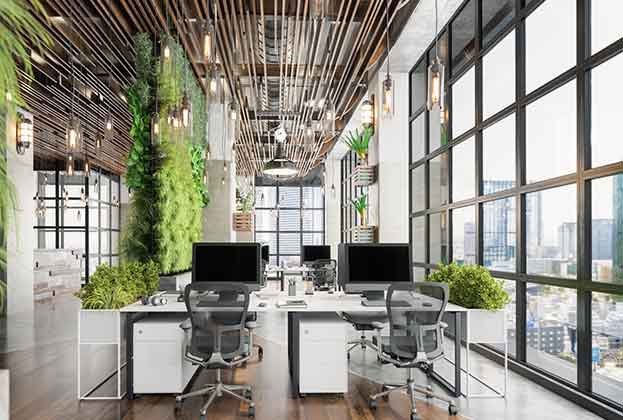Ongoing uncertainty remains a key driver of office market pricing
Global uncertainty – both economic and political – is continuing to contribute to volatility and rising prices in the office markets. Rising fit-out costs resulting from inflation in commodity prices, ongoing supply chain issues, and increasing construction and labour costs continue to be a key focal point for occupiers looking to take up space in prime CBD assets. Year to date, fit-out costs have increased across the SPOC markets by an average of 10%, broadly aligning with headline inflation figures. While uncertainty in the markets remains, it is likely that rising costs will persist through the near term.
Through the third quarter of the year, most markets in Asia-Pacific haven’t seen large changes in rental costs. However, they are not insulated from global supply chain issues contributing to rising fit-out costs. For the region, rental movements are flat on the quarter and down 1% on the year. Locations which have each seen increases in the third quarter include Shenzhen (+2%), Seoul (+1%), Singapore (+1%), and Ho Chi Minh City (+2%). Rental costs are overshadowed by rising fit-out costs, which have risen an average of 3% from Q2 and 9% from Q3 2021 across Asia-Pacific.
European and Middle Eastern office markets are more varied, seeing an increase in average gross rent across the region of 2% from Q2 and 6% over the past year. These higher rates can be attributed to both index-linked rental increases, rentalised fit-out costs in some markets, and the fact that energy costs, which are rising precipitously, are often factored into service charges. Fit-out costs are also continuing to rise, increasing by an average of 14% on the year as materials and labour inflation continues to have an effect.
The United States and other North American markets have seen less movement of rental figures, although fit-out costs have seen increases of 7% on the year: lower than the average headline inflation figure but still a sharp increase. Across the region in many major cities, workers have been notoriously slow in returning to offices post-pandemic, leading many firms to seriously reassess their space needs. Savills teams in North America note that there is an increase in subleasing activity, which indicates longer-term space and cost reductions from occupiers.
European market costs have been largely driven by the increasing face-rents as well as rising fit-out costs in many cities, in addition to all-time low vacancy rates in many locations
Kelcie Sellers, Associate, Savills Research
Markets which have seen the largest increases in net effective costs over the quarter are largely clustered in the EMEA region, locations such as Dublin (+7%), London City (+5%), Dubai (+3%), and Berlin (+3%). European market costs have been largely driven by the increasing face-rents as well as rising fit-out costs in many cities, in addition to all-time low vacancy rates in many locations. As demand continues to rise in Asia-Pacific markets and key North American cities, occupiers will likely continue to pay rising costs as fit-out increases lead to higher net costs for occupiers in the near term.
Rising costs are slowing down development and retrofitting activity creating shortages of prime, sustainable office spaces. This shortage is partially driving the emergence of a green rental premium of between 4–15% in Asia-Pacific markets, 10% in European markets such as the Netherlands, and between 5% and 10% in the US office markets as occupiers look to increase their sustainability in line with corporate and national targets.
Methodology
The Savills Prime Office Cost (SPOC) Index presents a quarterly snapshot of occupancy costs for prime office space throughout the world, as provided by our expert, local tenant representation professionals and researchers.
The adjusted annual all-in occupancy cost represents real-time transaction terms for 20,000 sq ft (2,000 sq m) of usable space based on a basket of top 5 most expensive properties to calculate ultra-prime average. The North American markets use a sample of very high rent threshold buildings (leasing occurring at the highest end of market).
All costs are reported in a standardised format of USD per sq ft of usable space per annum to account for variations in currency, reflect local payment protocols, and adjust for measurement practices across the globe. We have also factored in the credit value to the tenant generated from abated rent and the cost associated with fitting out the premises in order to provide an ’all-in‘ total occupancy cost in USD per usable square foot.
The fit-out costs were gathered from local Savills teams assuming the leasing scenario described above, plus the following: i) 30% cellularisation with the remainder of space open plan, ii) construction and cabling only (no furniture or professional fees).
Read the articles within Spotlight: Savills Prime Office Costs – Q3 2022 below.
.jpg)
